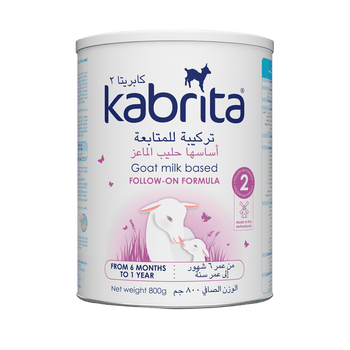4 Common Food Transitions

We share some best practices about common feeding transitions during infancy and early childhood. These are guidelines, not rules! Every family's feeding journey is unique and there really are as many ways to navigate the feeding transitions as babies! Ultimately, the best approach to changing the way you feed will be the one that works best for you and your baby.
Nutrition changes should always be discussed first with your healthcare provider.

1. Exclusive breast milk to breast milk + formula (also known as mixed feeding)
A common mixed-feeding strategy is to continue to breastfeed first during each feeding, then increase the amount of formula feeding. This method helps maintain your milk supply because you empty the breast completely during each feeding. Alternatively, you can choose a few feeding sessions during the day to replace it with formula. If you choose this method, it is important to remember that more time between breastfeeding sessions means that you are more likely to have decreased milk supply.

2. Breast milk exclusively to formula
We encourage mothers to provide as much breast milk as they can or want. However, there are many reasons why those may need or choose formula exclusively. For mothers who are making this transition, it is recommended to choose a few feeding sessions during the day to replace them with formula.
As the amount of bottle-feeding increases, the breast milk supply is likely to decrease. Gradually drop one breastfeeding session after another until you have completely transitioned to formula feeding. Ideally, mothers trying to suppress their milk supply can do so over time. Graduating a feeding or pumping session every other day, and/or cutting back a few minutes from each feeding can help avoid engorgement and reduce the risk of blocked ducts or infections. Executing a gentle breast massage and hand expression can be helpful in cases where mothers may need to stop breastfeeding abruptly.

3. From an existing milk formula to a new milk formula
It is estimated that families change formulas at least twice during their baby's first year. While this can be related to several factors, the baby's discomfort is often a motivating factor for parents to consider an alternative formula.
Cow's milk-based formulas have been the norm for many decades. Although it is well tolerated by many children, it has been linked to some minor functional gastrointestinal symptoms such as gas, stool abnormalities and discomfort in some children. For parents looking for a gentle alternative, a goat's milk formula, such as Kabrita, may be considered.
Goat milk contains easily digestible protein and is A2 milk in nature.
Kabrita Goat Milk Formula has added whey for easy digestion and uses an excellent fat blend with beta palmitate which benefits nutrient absorption and promotes softer stools. You can learn more about the parenting experience after switching to Kabrita here.
If you want to make a formula switch or switch to goat's milk, a 7-day transition is recommended.

In each bottle throughout the day, mix your current formula with your choice of new formula. Gradually increase the amount of new formula and decrease the amount of current formula used each day.

4. Formula milk or breast milk to whole cow's milk (or milk substitute)
When it's time to transition to milk, one common method is to choose a few feeding sessions during the day and replace those sessions with undiluted milk. If your baby refuses undiluted milk, consider a more gradual transition. Combine the current feeding method and milk, increasing the amount of milk each time.










